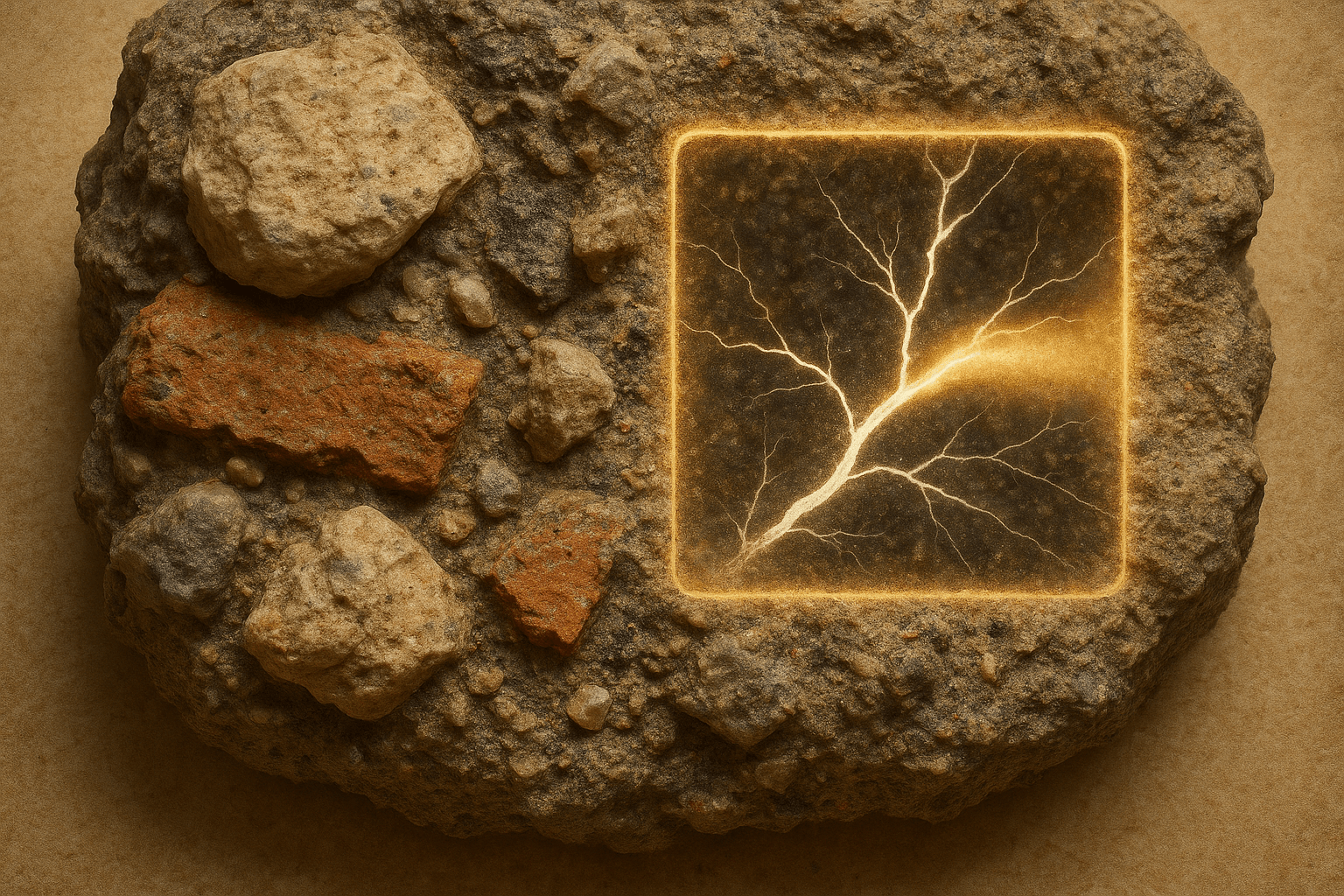Gaze up at the Pantheon’s magnificent dome in Rome, and you’re looking at an engineering marvel nearly two millennia old. For 2,000 years, this and other colossal Roman structures have withstood earthquakes, weathering, and the relentless march of time, often faring better than modern buildings just a few decades old. For centuries, historians and scientists believed they understood the recipe for Rome’s legendary concrete, opus caementicium. But one crucial question remained: why is it so incredibly durable?
The answer, recently uncovered by a team of scientists, is as ingenious as it is elegant. Roman concrete wasn’t just strong; it was designed to be self-healing. This discovery doesn’t just solve an ancient mystery; it offers a profound lesson from the past that could revolutionize modern construction.
The Recipe That Built an Empire
Before Roman concrete, monumental architecture was largely defined by the post-and-lintel system of the Greeks—think massive stone blocks, carefully carved and stacked. This method was effective but limited, restricting the scale of open interior spaces and the shapes builders could create.
Then came opus caementicium, a true game-changer. It wasn’t concrete as we know it today, but a unique mixture that allowed for unprecedented architectural freedom. Molds could be filled with this wet mixture to create powerful arches, sweeping vaults, and awe-inspiring domes. The Romans were no longer just stacking stones; they were sculpting space itself.
For a long time, the recipe was believed to consist of three main ingredients:
- Lime: A binding agent made by heating limestone.
- Volcanic Ash: Specifically, a type called pozzolana from the region around Pozzuoli, near Mount Vesuvius.
- Aggregate: Chunks of rock, broken brick, or other rubble.
When mixed with water, the pozzolanic ash and lime formed an incredibly stable hydraulic binder. Unlike modern mortars, this mixture could harden even underwater, making it perfect for building bridges, aqueducts, and massive harbors whose foundations still stand today.
A 2,000-Year-Old Puzzle
While the basic ingredients were known, the source of the concrete’s exceptional longevity remained a puzzle. Modern concrete, based on Portland cement, is notorious for cracking and degrading over a period of 50 to 100 years, especially when exposed to the elements. Yet Roman sea walls, battered by waves for two millennia, show remarkably little erosion.
Adding to the mystery were small, millimeter-sized white chunks consistently found within the ancient concrete. These bits, known as “lime clasts”, were long dismissed by researchers as evidence of sloppy mixing or poor-quality raw materials. The assumption was that the Romans hadn’t properly mixed the lime, leaving these unblended lumps behind. It seemed like a flaw, a sign of primitive technique. As it turns out, these supposed flaws were the secret to its success.
The ‘Self-Healing’ Breakthrough: Hot Mixing
A groundbreaking 2023 study led by researchers from MIT, Harvard University, and laboratories in Italy and Switzerland completely upended the old assumptions. By analyzing samples from the Privernum archaeological site in Italy, they discovered that these lime clasts were not an accident—they were an intentional and brilliant feature of the manufacturing process.
The key was a process now known as “hot mixing.” The previous theory assumed the Romans used slaked lime, which is created by first mixing lime with water to create a paste. The new evidence suggests they mixed quicklime (calcium oxide, a more reactive, dry form of lime) directly with the pozzolanic ash and water.
Adding quicklime to water triggers a powerful exothermic reaction, causing the temperature of the entire mixture to skyrocket to over 200°C (400°F). This intense heat altered the chemistry of the concrete, creating compounds that wouldn’t form at lower temperatures. It also explains the lime clasts: they are leftover bits of quicklime that didn’t fully dissolve.
Herein lies the genius of the Roman method. These brittle lime clasts act as a built-in repair mechanism:
- Over time, a tiny crack forms in the concrete due to stress or ground settlement.
- When rain or groundwater seeps into the crack, it eventually reaches one of the lime clasts.
- The water reacts with the reactive quicklime inside the clast, creating a calcium-rich solution.
- This solution spreads into the surrounding cracks and then rapidly recrystallizes as calcium carbonate, effectively “stitching” the fissure back together and reinforcing the structure.
What was once seen as a flaw was actually a sophisticated, self-healing system. Whenever the concrete was damaged, it had the ability to repair itself, preventing small cracks from growing into catastrophic structural failures.
Ancient Wisdom for a Modern World
This rediscovery of Roman ingenuity is more than just a fascinating historical footnote. It has profound implications for the future of construction. The production of modern Portland cement is an energy-intensive process responsible for an estimated 8% of global carbon dioxide emissions.
The Roman-inspired “hot mixing” technique opens the door to producing a more durable concrete at lower temperatures, potentially reducing the carbon footprint of the industry. More importantly, creating self-healing concrete would mean our infrastructure—bridges, buildings, and dams—could have a significantly longer lifespan, requiring fewer costly repairs and replacements.
The Pantheon’s enduring grace is therefore a testament not only to the ambition of Roman emperors but to the incredible materials science of their engineers. They created a substance that was not just static and strong, but dynamic and resilient. By looking back at the wisdom of our ancestors, we may have just found a key to building a more sustainable and enduring future.
